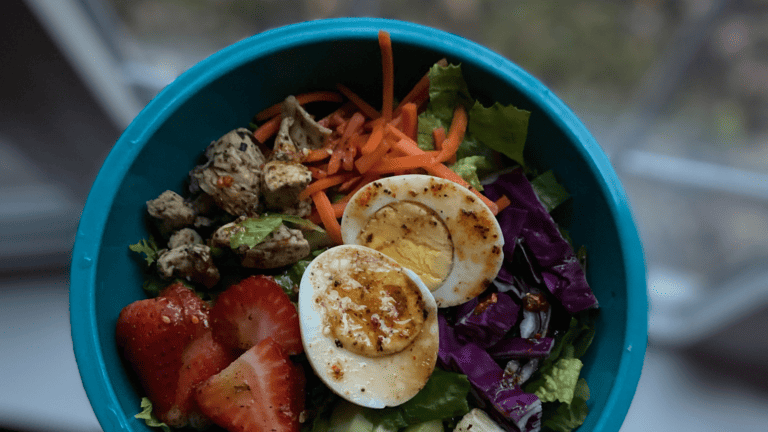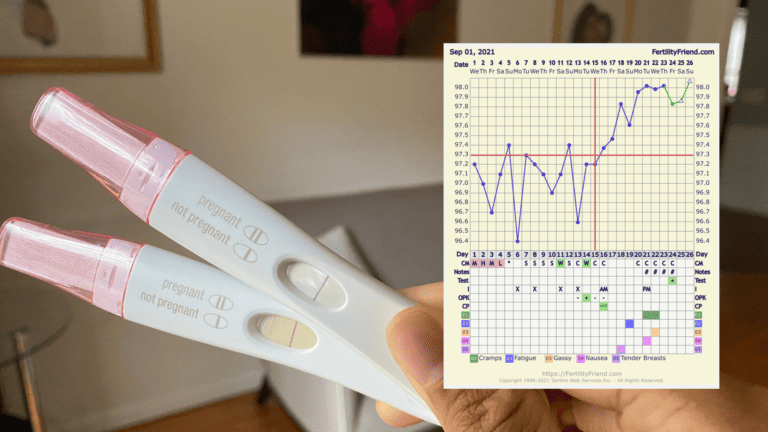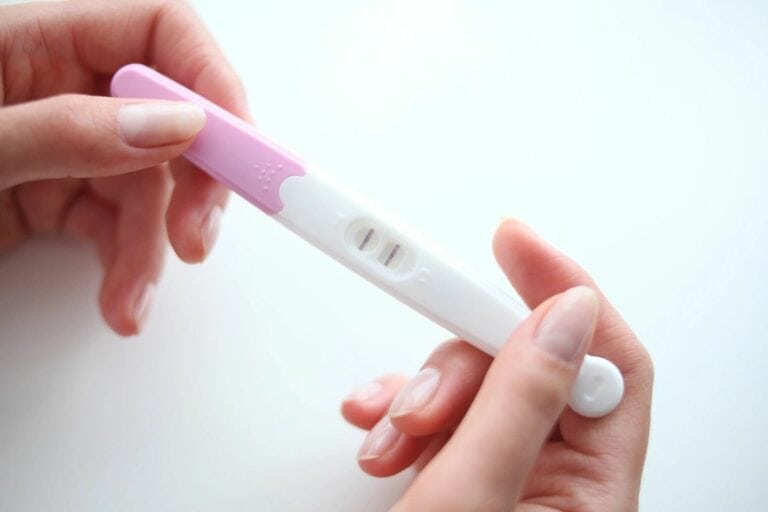Luteal Phase: Foods to Avoid and Best Foods To Eat

Last Updated on August 10, 2023 by Avi Steen
Ah, the intricate dance of hormones and cycles that make up a woman’s journey. If you’ve ever wondered how your body orchestrates the symphony of your menstrual cycle, you’re not alone. Whether you’re aiming to boost your fertility or seeking to harmonize your hormones, understanding the luteal phase foods to avoid is a key step.
In this guide, we’ll navigate through the luteal phase’s nuances, explore the foods that can either hinder or help your journey, and uncover some holistic habits that can keep your hormonal ship sailing smoothly.
All About The Phases of Your Menstrual Cycle
Before diving into the luteal phase, let’s take a detour through your menstrual cycle, starting on the first day of your period through the premenstrual symptoms.
Follicular Phase
In the early days, your body sets the stage with the menstrual phase – a time of release and renewal. A woman’s menstrual cycle starts on the first day of menstruation.
Hormones are usually at their lowest levels during this stage of your cycle. As menstruation tapers off, you enter the specific part of your cycle where eggs are created for fertilization – the follicular phase.
During this phase, the levels of estrogen, the hormone that makes you feel vibrant and energetic, begin their ascent. As your estrogen levels rise, the luteinizing hormone steps in, signaling the ovary to release an egg in a grand performance known as ovulation.
During this phase of your cycle, your energy levels are usually at their highest as your hormone levels peak. After the ovulation phase enters the star of this blog post, the luteal phase.
Luteal Phase
The luteal phase follows the ovulatory phase and is a time of profound significance, especially for women trying to get pregnant.
Progesterone levels increase after ovulation and have important things to do in this second half of your cycle. Its task? To prepare the uterine lining for a possible pregnancy, setting the scene for potential implantation.
Implantation When Trying To Get Pregnant
Should fertilization occur, the uterine stage is all set – the lining is lush and welcoming, ready to embrace the tiny newcomer, a new baby. This delicate process, known as implantation, is the miraculous beginning of new life.
Implantation happens in the luteal phase, also known as the two-week wait in the fertility community. During implantation, you might notice a basal body temperature dip or even implantation cramps similar to that of menstrual cramps.
- 7 Insane Foods to Eat to Get Pregnant That Will Give You a Fertility Boost
- Acai Berry Fertility Supplement To Improve Fertility (2023)
- Pineapple and Fertility: Debunking Myths and Revealing the Truth
- 10 Simple PCOS Snacks To Satisfy Your Cravings
- What Foods Stop You From Getting Pregnant?

Luteal Phase: Foods to Avoid
Now that we know a little bit about the distinct phases that affect your overall health as a woman, let’s dive into the specific foods to stay clear of for your body’s needs.
Inflammatory Foods
Inflammation can be like an unruly guest crashing a perfectly serene party. Foods high in inflammatory compounds, like processed vegetable oils and sugary snacks, can incite this chaos by causing hormonal imbalances.
Common symptoms of this imbalance include mood swings, bloating, acne, and infertility. To keep your hormonal symphony harmonious, consider minimizing your intake of these troublemakers.
Highly Processed Foods
Highly processed foods may be convenient, but they often contain hidden villains that disrupt hormonal equilibrium. Processed foods heighten your stress response and decrease your metabolic rate.
They also add to unhealthy food cravings throughout the day as you eat these different foods. Say no to refined ingredients and yes to nature’s bounty for a smoother hormonal ride.
Trans Fats
Trans fats, the notorious disruptors of hormonal balance, can throw a wrench in your hormones. Skip the fried and heavily processed foods to keep your hormonal choreography on point.
Added Sugars
Those tempting sugary treats might offer momentary bliss, but excessive sugar can lead to dramatic insulin spikes and crashes. Insulin sensitivity can be a pesky cause of many hormone fluctuations you may experience. Instead, opt for dark chocolate or a natural source of sugar like fruit.
Red Meat
There are many studies that show the negative implications of red meat intake. For optimal fertility, explore lean protein alternatives like poultry, fish, beans, and lentils.

Best Foods to Eat
Now, let’s shift gears and explore the food choices that can enhance your luteal phase as your progesterone rises. Overall, anti-inflammatory foods will be your best friends on this journey to a healthier fertility.
Healthy Fats
Embrace healthy fats like avocados, nuts, and chia seeds. These nutrient powerhouses support hormone production and provide a solid foundation for reproductive health.
Vitamin C-rich Foods
Citrus fruits, berries, and bell peppers are laden with vitamin C, which not only boosts your immune system but also aids in iron absorption, a crucial factor in your luteal phase journey.
Couple these with iron-rich foods like spinach to help improve your fertility and overall health.
Cruciferous Vegetables
Broccoli, cauliflower, kale, and cabbage are your allies in promoting estrogen metabolism. These veggies contain compounds that help your body balance this vital hormone.
Whole Grains
Trade refined grains like pasta for whole grains like sweet potatoes, quinoa, and brown rice. These complex carbohydrates provide sustained energy and stable blood sugar levels, two key factors in maintaining hormonal harmony.
Overall, sticking to a whole foods-based diet is an essential first step in your fertility journey.

Healthy Habits for Hormone Health
Food is just one piece of the puzzle. Let’s explore some healthy habits that can keep your hormonal ensemble in tune.
Stress Management
Stress can wreak havoc on your hormones. Engage in self-care routines, try journaling, or find peace in prayer to keep stress at bay.
Here’s a list of 12 stress management activities:
- Practice deep breathing exercises.
- Engage in regular physical activity, such as walking, stretching, or strength training.
- Spend time in nature and enjoy outdoor activities.
- Read the word of God.
- Keep a journal to express your thoughts and emotions.
- Listen to calming music or nature sounds.
- Engage in creative hobbies like painting, crafting, or playing a musical instrument.
- Spend quality time with loved ones and engage in meaningful conversations.
- Enjoy a warm bath or shower to relax your muscles.
- Light a good-smelling candle and read a book.
- Watch a funny movie with your husband.
- Practice gratitude by listing things you’re thankful for each day.
Remember, finding the right stress management techniques for you may require some experimentation. Feel free to mix and match activities until you discover what brings you the most relaxation and peace.
Adequate Sleep
Sleep isn’t just for resting your body; it’s a vital rejuvenation period for your hormones. Ensure you’re getting enough quality sleep to support your body’s natural rhythms.
Adequate sleep is also important for your gut health. Making sure you’re resting your gut, which is your second brain and directly connected to your hormones, can help improve your fertility journey.
Regular Exercise
Exercise is a fantastic way to maintain a healthy weight and promote hormone balance. Tailor your routine to your menstrual cycle, focusing on recovery during the luteal phase.
Here’s a list of 8 active recovery exercises:
- Light Cardio: Gentle cycling, walking, or swimming to increase blood flow without strenuous effort.
- Foam Rolling: Using a foam roller to target specific muscle groups and alleviate tension.
- Stretching: Incorporate dynamic or static stretches to improve flexibility and reduce muscle tightness.
- Tai Chi: Slow, flowing movements to enhance balance, coordination, and mental relaxation.
- Resistance Band Exercises: Engage in resistance band workouts to promote muscle recovery and joint stability.
- Swimming: Gentle laps or water aerobics to reduce the impact on joints while providing a full-body workout.
- Bodyweight Exercises: Perform light bodyweight movements like squats, lunges, and push-ups for active recovery.
- Walking: Take a leisurely walk, focusing on your breathing for 30 minutes a day.
These active recovery exercises can help you maintain fitness, reduce muscle soreness, and promote overall relaxation. Remember to listen to your body and adjust the intensity based on how you feel.
Next Steps
As we draw the curtain on our exploration of the luteal phase’s culinary and lifestyle influences, remember that your journey is unique. Whether you’re seeking fertility or striving for balanced hormones, your choices matter. Embrace the power of personalized decisions and, whenever needed, seek guidance from healthcare professionals who understand your individual needs.
Before you go, be sure to check out my free fertility nutrition guide – a companion to harmonize your hormones naturally.
*Note: This blog post is for informational purposes only and should not replace professional medical advice. Always consult a healthcare provider for personalized guidance.*

Octavia Steen is an NBDA certified fertility doula, health coach, certified fitness nutrition specialist, aspiring missionary with the COGIC, and owner of Mother Mindset. She helps future and current mamas become more consistent in faith + fitness and grow closer to God so they can create a healthier lifestyle from the inside out!






